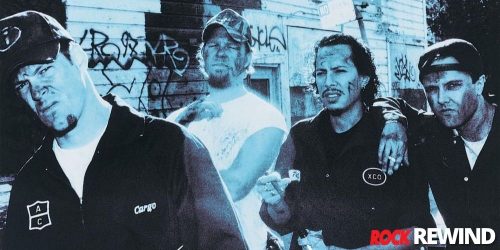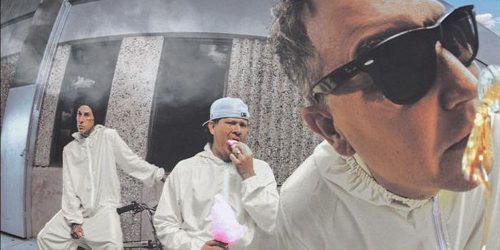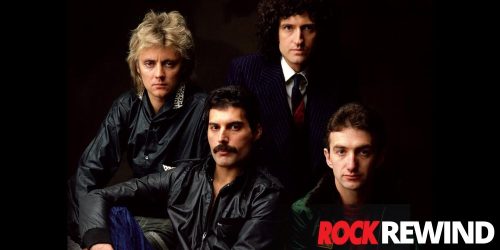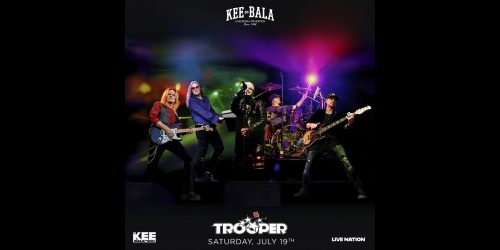Rock Rewind: The Story Behind Sloan
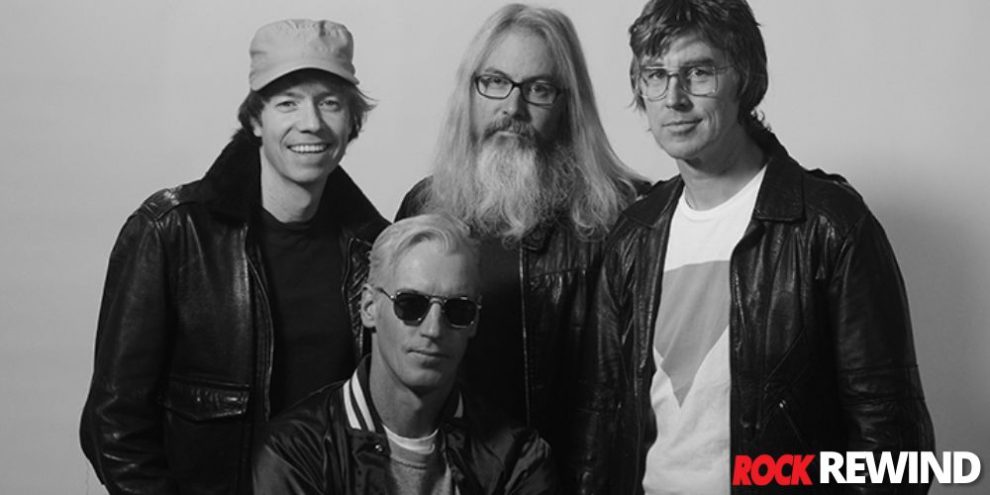
Sloan is a Canadian rock quartet hailing from Halifax, Nova Scotia. With the release of their first EP, they quickly gained popularity in the Canadian rock music scene.
Fun Fact: Did you know that people from Halifax are called Haligonians?
By the time they released their third album, they had already made it onto Chart magazine’s list of Top 50 Canadian Albums of All Time.
With Sloan performing at this year’s Birthday Bash celebration, we thought this would be a good time to take a deeper dive into the band and their story.
RELATED: The guitar-driven sound of David Wilcox ...
How Sloan Came To Be
Since their formation, Sloan’s lineup has consisted of:
- Chris Murphy (Bass)
- Patrick Pentland (Lead Guitar)
- Jay Ferguson (Rythm Guitar)
- Andrew Scott (Drums)
Each member is a multi-instrumentalist and all contribute to songwriting and singing.
While they were all living in Nova Scotia when they met, only Ferguson was born there. Murphy was born in Charlottetown, PEI but moved to Halifax as a teen, after a short stint in Ontario. Scott moved with his family from Ottawa to Dartmouth, Nova Scotia when he was 6 and Pentland’s family moved there from Ireland when he was 8.
Regardless of how they made their way to the East Coast, each had a love for music.
In 1986, Matt Murphy (best known as the vocalist and guitarist of Super Friendz), introduced Jay Ferguson and Chris Murphy. While Chris often told people he was Matt’s brother, the two are unrelated.
The trio played together in The Deluxe Boys until 1987 when they disbanded. Ferguson and Chris Murphy went on to start Kearney Lake Rd. with Henry Sangalang in October of the same year.
In 1990, Kearney Lake Rd. broke up. By this time Murphy had become friends with Andrew Scott.
The two were attending the Nova Scotia College of Art and Design together. While there, Scott (drums) and Murphy (bass) would get together for regular jam sessions. Soon Ferguson (guitar) joined in and the trio began looking for a fourth.
Murphy suggested Patrick Pentland, who was skilled on guitar and vocals. The band offered Pentland a spot and in January 1991, he accepted.
How Sloan Got Their Name
Sloan’s name actually came from a friend of the band, named Jason Larson. Larson had come to be known as “Slow One” at work. But when his boss, who had a French accent, said the name, it sounded a lot more like “Sloan.”
Wanting to use the name for their band, Sloan made a deal with Larson. They could use it, but Larson would have to appear on the cover of their first album.
The deal was kept and Larson’s face appeared on their first EP, Peppermint.
Changing Things Up
When the band first started, Pentland and Murphy played the opposite instrument. Murphy was on guitar and Pentland was on bass.
But after their first show at Nova Scotia College of Art and Design, the two switched. While they will occasionally go back to their original instruments, more often than not, Pentland is on lead guitar while Murphy plays bass.
Releasing Their First EP
After participating in a battle-of-the-bans event, Sloan won a session with Terry Pulliam at Soundmarket Studios. While in studio, the band recorded a full album worth of tracks, including “Underwhelmed,” which was selected for the 1992 compilation album Here And Now as part of their prize.
“Underwhelmed,” along with “Marcus Said,” “Pretty Voice,” “Lucky For Me,” “Torn” and “Sugartune” would later be used on their debut EP, Peppermint, which was released on the band’s own label, Murderecords.
Before the EP was released, however, the band started getting interest from labels like Nettwerk, MCA Canada, and Geffen Records. After Geffen’s Tom Sullivan received a copy of the Pellium recording and watched the band perform live in Vancouver, he approached the band. In 1992, the band signed on with Geffen and began work on their first full-length studio album.
Sloan Discography
Since 1991, Sloan has put out:
5 live albums – Recorded Live at a Sloan Party (1997), 4 Nights at the Palais Royale (1999), Is That All I Get? Recorded September 20, 1993 (2011), Australia 1999 (2012), and Tokyo, Japan 2002 (2013)
3 compilation albums – A Sides Win: Singles 1992-2005 (2005), B Sides Win: Extras, Bonus Tracks and B-Sides 1992-2008 (2010), and Select Singles: 1992-2011 (2011)
They’ve also released 13 studio albums …
1. Smeared (1992)
After signing on with Geffen Records in 1992, Sloan began work on their 1st studio album. The total cost of the album was $1,200. “Marcus Said” and “Torn” from their debut EP were remixed for the album, while “Underwhelmed,” which peaked at #25 on the Canadian charts, was re-recorded as the lead single.
The album sold 150,000 copies worldwide (60,000 in Canada) and was certified gold in 1995.
Following its release in the US in 1993, the band started their first North American Tour. Music videos were also produced for “Underwhelmed” and “500 Up.”
2. Twice Removed (1994)
Twice Removed was Sloan’s second studio release and their last with Geffen Records.
The album cost $120,000 to produce and detoured from the grunge rock sound of Smeared. Instead, the album was simpler and more melodic, which went against the grain of Geffen’s style.
Before a meeting with Geffen’s president, Sloan’s manager Chip Sutherland told the band, “Boys, I’m going to meet Eddie Rosenblatt in half an hour and he’s going to ask us to re-record the album…I think you should tell them to go fuck themselves…It will be the end of your career at Geffen, but you made a good record and you know it. If you start trying to make records for record companies, then you’re fucked.”
As he predicted, Geffen requested that the band re-record the album but Sloan refused.
In response, the label did little promotion for the album. Following its release, Sloan left Geffen.
Still, the album sold well in Canada and was followed up with a tour with stops across the country. It was also named The Best Canadian Album of All Time by OnePoll.
3. One Chord To Another (1996)
The release of Twice Removed was followed up with more touring, including a headline performance at Edgefest in the summer of 1995.
But things had started to go south with the band. Murphy explained that they were just “going through the motions” and were “dormant as an artistic vehicle.” Rumors began circulating that the band was breaking up and in late 1995, Sloan went on a short hiatus, though as far as they were concerned, they had disbanded.
While broken up, each of the members focused on their other projects. Pentland wrote new songs, Murphy and Scott played for other bands and Ferguson worked on co-producing other Canadian acts.
During this time, Murphy and Ferguson continued to work together on Murderecords. But they felt the label needed more attention and a boost to its finances. Their solution was to release a third Sloan album on Murderecords.
After getting Scott and Pentland on board, the quartet began recording One Chord To Another. The album was completed in two weeks and cost $10,000 to produce at Idea of East Recording Studio in Halifax.
As was the case for the previous two albums, all the members sang, wrote, and oversaw their own songs. To pull all of the music together and make the album more cohesive, each song features drums recorded on a 4-track cassette recorder. The album also featured trumpets in some of the tracks.
The release debuted at #15 in Canada, resulting in sales of over 80,000 copies, and earned them their first Juno in 1997 for Best Alternative Album. Like their previous albums, One Chord To Another was followed up by another tour including stops in both Canada and the US.
4. Navy Blues (1998)
In an interview with Billboard, Murphy explained that while recording One Chord To Another, it became apparent to the band members that “to everybody, the band was still fun and we [were] even better at playing.”
It seemed the cooling-off period between their previous two records was exactly what the doctor ordered.
Hard feelings aside and bonds renewed, the band decided to continue their work together. The result was the 1998 release of Navy Blues.
Navy Blues was heavier than One Chord To Another and Twice Removed and included the song “Money City Maniacs.” The track went on to become one of their most popular, becoming a top 10 hit in Canada, and was used for a Labatt Blue beer commercial.
The album was certified gold in the year of its release and sold more than 70,000 copies in Canada.
5. Between The Bridges (1999)
In 1999, Sloan released their 5th studio album, Between The Bridges. The album took 6 weeks to record and was again released on Murderecords.
Between The Bridges is similar to their previous releases with a 1960/70s pop-rock sound. It also matched the theme of their last two releases, talking about rock, relationships, and the world from an underdog’s perspective.
Exclaim! Called it a “pop thrill from start to finish,” while The AV Club recognized it for its depth stating:
“Though many dismissed the album as creatively arrested, its suite-like construction and autobiographical structure makes it Sloan's most fully realized effort.”
The album has sold more than 40,000 copies.
6. Pretty Together (2001)
In July 2001, it was announced that Sloan signed a licensing agreement with BMG Music Canada. They would continue to release their albums under Murderecords, but BMG would liaise with radio stations and retail outlets on their behalf. Prior to this, Universal Music Canada had managed distribution.
Pretty Together continued with the 1960s/70s sound but this time the album featured less upbeat songs. Instead, they were replaced by more pensive tracks and introspective lyrics. Themes include breakups, love triangles, the uncertainty of love, and being consumed by the everyday hustle.
While it was not the album that many were expecting, it showed that Sloan was growing and developing as a band.
The album entered the Canadian charts at #12 and received a Juno nomination for Best Rock Album in 2002.
7. Action Pact (2003)
In 2003, Sloan decided to make a bigger push into the US, recording their 7th album with Tom Rothrock in Los Angeles. The result was a more radio-friendly sound.
Unfortunately, the album did not perform as hoped in the US but continued Sloan’s popularity in Canada, debuting at #11.
Unlike all of Sloan’s other albums, Action Pact does not include music from all of the band members, with no songs written by Scott.
8. Never Hear The End Of It (2006)
US recognition finally came with the release of Never Hear The End Of It. The 30-song album charted at #48 on the Billboard Heatseekers and debuted at #29 in Canada.
Having the longest runtime of any of Sloan’s studio albums, Never Hear The End Of It, featured songs from every member including Scott’s “I’ve Gotta Try,” Ferguson’s “Who Taught You To Live,” Pentland’s “Ill-Placed Trust,” and Murphy’s “Fading Into Obscurity.” It also includes the all-member collaboration “Flying High Again.”
In a 2008 interview, Murphy shared that Never Hear The End Of It was the band’s best recording experience to date.
9. Parallel Play (2008)
Sloan followed up their longest-play album with their shortest to date, Parallel Play, which offers 13 songs and a playtime of 37 minutes.
Talking about Parallel Play in an interview, Murphy shared, “[Never Hear The End Of It]’s like my favourite of all our records - I loved the indulgence of it ... But yeah, it's better to give people something a little more digestible for sure.”
The album has everything from retro-pop to rock. Still, every track on the album segues into the next, creating a cohesive final product while still staying true to their roots of collaboration.
10. The Double Cross (2011)
In 2011, Sloan released their tenth studio album. Beating their previous shortest playtime record, its 14-song playlist takes up only 34 minutes.
Nominated for the 2012 Rock Album Of The Year Award as well as a Polaris Music Prize, Double Cross is a nod to their 20th anniversary (XX in Roman numerals).
When asked whether celebrating their 20th anniversary put any additional pressure on the band to produce, Ferguson shares, “Honestly, it was ‘Let’s just try and get a record out in 2011.’ I don’t think we’ve ever slacked off on albums, we’ve always tried to have the best songs going and make a great record.
“But because we’re four singers, four songwriters it’s hard to come up with a plan beforehand. Rarely do we have an overarching theme. ‘Hey, let’s make a country record!’ That doesn’t happen. Everybody just writes on their own, you have five or six songs on the go and you hope everyone else will chime in and champion other’s material.
“I had a couple of songs that matched up with what Chris had, and thought “oh we could link these together.” For example, I had a bridge for one of my songs that I thought was okay and Chris took a bridge from one of his songs and that became “The Answer Was You” and that made it better. But yeah, it’s also ‘When can we finish this by?’ It’s a bit luck of the draw, but everybody had really good songs this time.”
To promote the album, Sloan released a video series on YouTube featuring interviews with musicians and celebrities.
11. Commonwealth (2014)
Following the release of Double Cross, Sloan went on a supporting tour for the album followed by a supporting tour for the re-issue of Twice Removed. Then, in 2013, they announced a double album where each band member would be featured on one of the four sides.
Sloan released Commonwealth in September 2014. The cover features four-of-a-kind kings with each king depicting a member of the band. The suit of their card corresponds with the name of the title of their album side:
- Diamonds - Jay Ferguson
- Hearts - Chris Murphy
- Clubs - Patrick Pentland
- Spades - Andrew Scott
12. 12 (2018)
It wouldn’t be until 2018 that Sloan would release their next studio album. The album debuted at #11 on the Billboard Heatseekers, which is the highest an album has ever entered the chart.
The name of the album came from the fact that it was their 12th album. Murphy explains, “I think that 12 was somewhat unimaginative.” He explains that he wanted to use the name “Essential Services” because Sloan had become such a big part of what it means to be Canadian, they’re as essential as the services that are here to protect us. He goes on to explain, “We're not allowed to go on strike, we're not allowed to stop … I guess the other guys didn't think it was funny enough.”
The album is made up of the power pop sound that Sloan has become known for but also mixes in some rock, alt-rock, and grunge.
13. Steady (2022)
In July 2022, Sloan announced the release of their 13th studio album, Steady, with the release of “Spend The Day.” The following month, they released “Scratch The Surface” as the official lead single, and on October 21, 2022, the album hit store shelves.
Like One Chord For Another, drums for the album were recorded on a 4-track cassette recorder.
Following the release, Sloan toured the album until June 2023.
RELATED: The evolution and impact of Finger Eleven ...
Standing Out In The Rock Scene
Sloan's journey through the music industry is a clear example of persistence and adaptability. From their early days in Halifax, Nova Scotia, the band navigated various challenges. But despite occasional setbacks, Sloan's commitment to their craft remained unwavering, consistently delivering albums that resonate with their fan base.
Sloan's ability to stay relevant in an ever-changing industry has been evident throughout their career. Their evolution has showcased their musical versatility and ability to balance creative integrity with commercial demands.
Through their enduring presence and consistent output, Sloan has carved a niche for themselves in the Canadian rock scene and created a catalog of music that reflects their resilience and dedication to their art.
As they continue to tour and connect with audiences, Sloan's impact on the music world remains a noteworthy chapter in the history of rock.
Snag Our Newsletter
Hit that button like you’re pressing play on your favourite track. get exclusive content, stories, and news.

